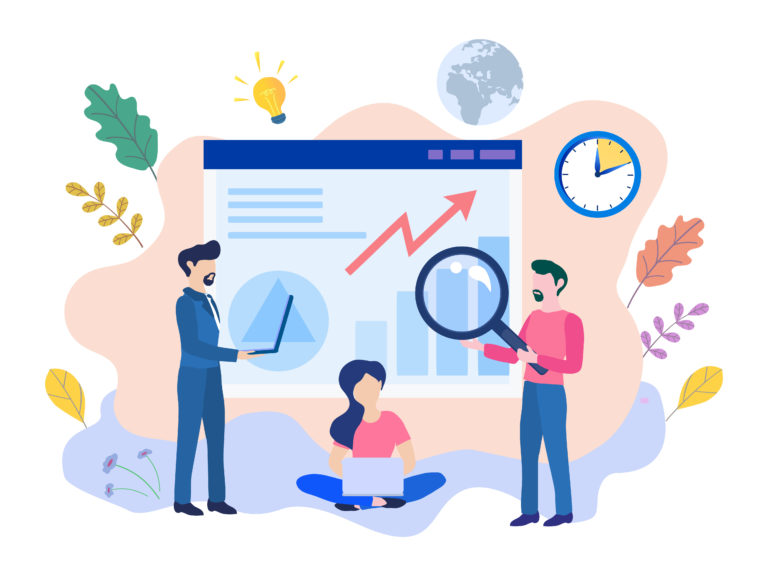In the technology industry, you may have heard about user experience (UX). UX is hailed as the heart of digital transformation by heavily influencing an organization’s success in meeting customer demands. Both personalization and customization can enhance UX, but the two terms are not synonymous. In this article, we dive deep into the differences between personalization and customization in user experience.
What is personalization?
Personalization comes from the actual software application. The app, using predictive analytics and algorithms, carefully curates the content for the specific user’s needs. YouTube is a great example of this, recommending similar video content based on the viewer’s interests.
In addition to recommending content, other platforms like Yelp and DoorDash help recommend places to eat based on a user’s location. Certain features can become available to users with the help of personalization too, like Spotify. Audiences appreciate this tailored experience, building brand loyalty around the company behind the personalization.

How Spotify personalizes music to the listener. (Sourced by Medium)
Why should you personalize?
According to UX Planet, the main goal of personalization is “to deliver content and functionality that matches specific user needs or interests, with no effort from the users.” The application uses that predictive technology to identify the user, recording feedback back to the app based on the user’s actions within the app itself.
This type of feedback is a goldmine of information that allows companies to personalize user experiences down to the details. For example, Pinterest is a search engine that exploded in popularity due to its widely personalized searching capabilities. Pinterest also uses the visual appeal element to full effect in brand marketing, drawing people in much like Instagram. Another example is streaming giant Netflix, where personalization to the viewer is imperative to retaining subscribers and attracting new ones.
By personalizing each user’s customer experience, you have a greater chance of retaining business and even securing higher sales. The result? More company revenue.
What is customization?
While personalization is changed on the app’s behalf to reach the user, customization is changed from the actual user. Apps and services that allow their users to customize their interfaces, content, or functionality fall within customization.
An example of interface customization comes in the form of news platforms (like Medium), where readers can opt into stories and content based on reading other content. MySpace was huge in the early 2000s due to the incredible ability to customize user skin, content, and sounds based on the personality of the user. This evolved into the Tumblr we know today, and later, Facebook.
Why should you customize?
Customization is successful due to its ability to restore power and control to the user. An easy tangible example of customization is our cell phones. Between Android and Apple OS, cell phone owners are able to change the skins, push notifications, and actual functionality of their phone with the touch of a button. For Apple fans, in particular, Apple has created an extremely brand loyal customer base toward its products. Thanks to customization, Apple has been able to extend this loyalty and customization ability to other products — first with the Mac, the iPod, then the iPhone, the iPad, and finally, with the Apple Watch. These products are loved for their ability to be changed to exactly what the user wants.
Customization is a viable strategy toward great UX assuming that users know their goals and needs best, a byproduct of natural intelligence (coming straight from the user), rather than artificial intelligence (coming from the app itself). If the end goal is to create physical products or create service offerings that let consumers make choices themselves, then customization is the route to go.
 The future of UX is not on a screen. (Sourced by UX Collective)
The future of UX is not on a screen. (Sourced by UX Collective)
The future of user experience
Technology is continuing to evolve to meet user demands. Things like voice command, zero user interface (Amazon’s Alexa is successful in both of these), and more machine learning in artificial intelligence is changing the way designers create consumer products.
Personalization was once hailed as the golden ticket to delivering what people wanted from companies: a truly tailored experience with zero user effort. Amidst privacy control regulations and a changing market landscape, companies will have to take personalization one step further. Mental health concerns and increased burnout has pushed the demand for greater control over technology. The answer to consumer woes? Customization.
By taking personalization to the next level with customization, companies can be sure that their customers are able to feel in control of their buying decisions and truly cater their products to their lives. The result is a more deeply ingrained adoption of technology that doesn’t have to rule a user’s life, but instead, enhance it. For UX designers, understanding new contexts when designing for humans is key to achieving great UX.
Great UX isn’t just limited to B2C technology. Our enterprise business process management (BPM) solution is open source and customizable to your technical and business needs. Learn more about our OEM and cloud-based platform at www.processmaker.com.
About ProcessMaker:
ProcessMaker is a low-code business process management and workflow software. ProcessMaker makes it easy for business analysts to collaborate with IT to automate complex business processes connecting people and existing company systems. Headquartered in Durham, North Carolina in the United States, ProcessMaker has a partner network spread across 35 countries on five continents. Hundreds of commercial customers, including many Fortune 100 companies, rely on ProcessMaker to digitally transform their core business processes enabling faster decision making, improved compliance, and better performance.





